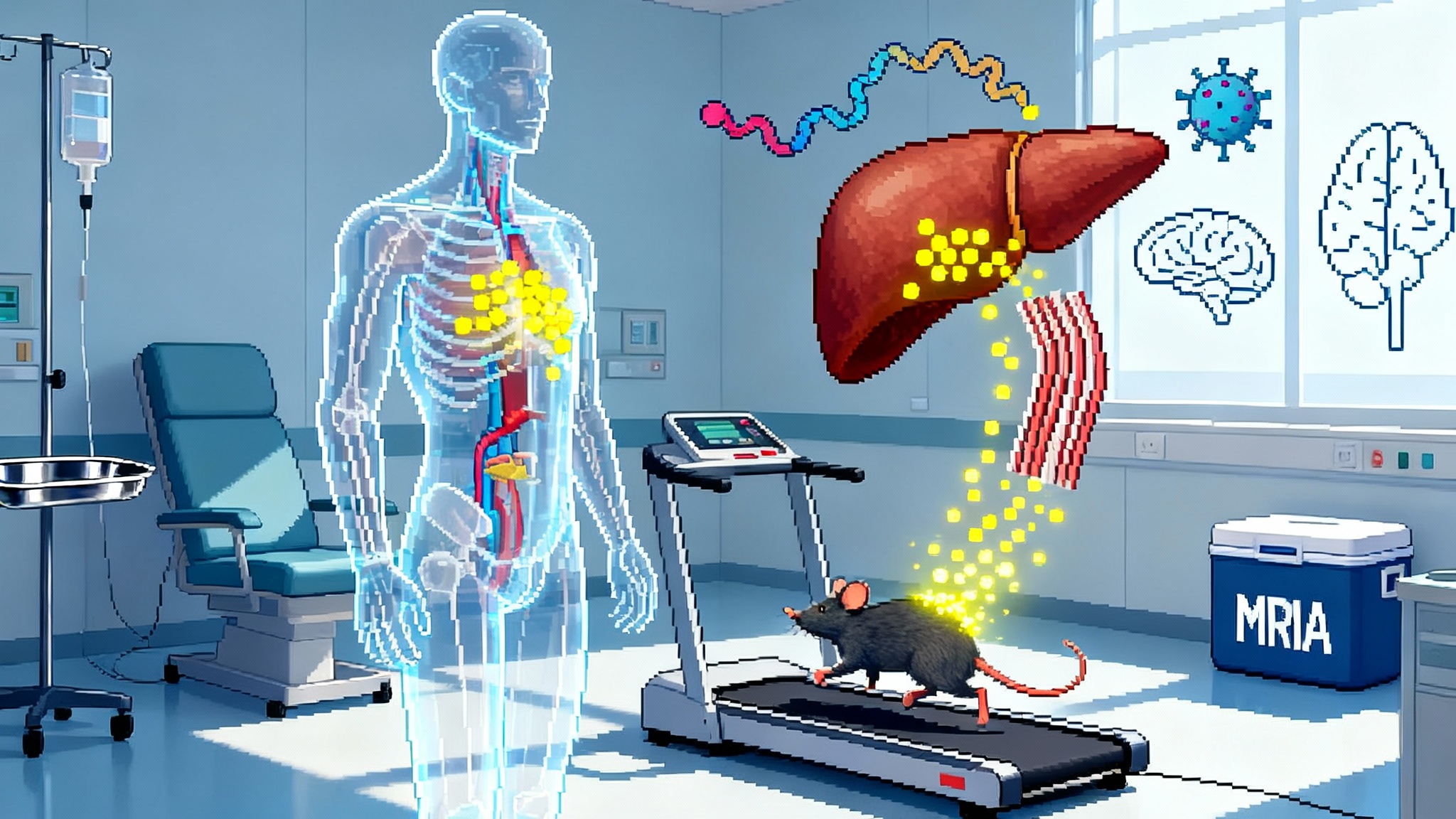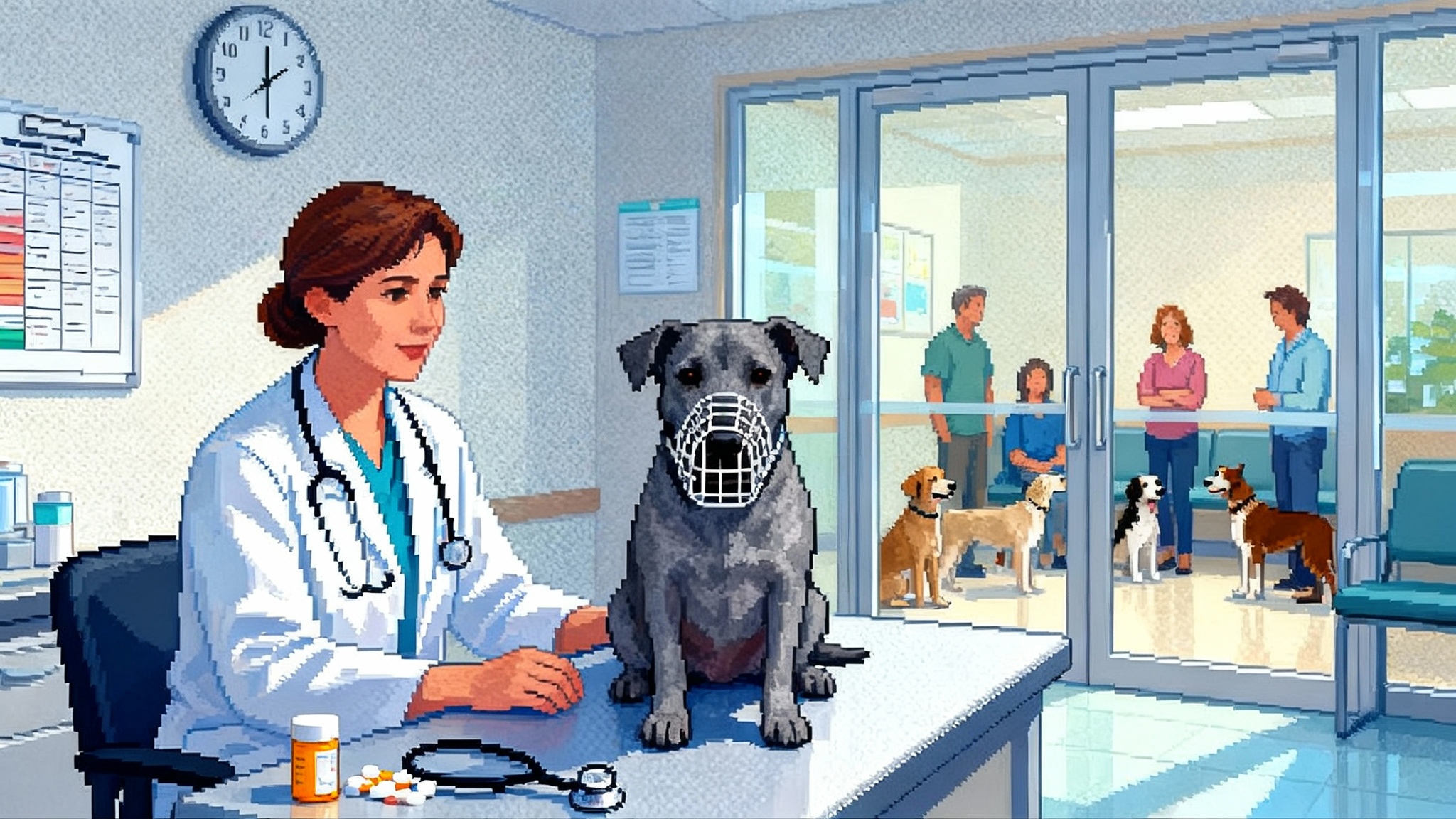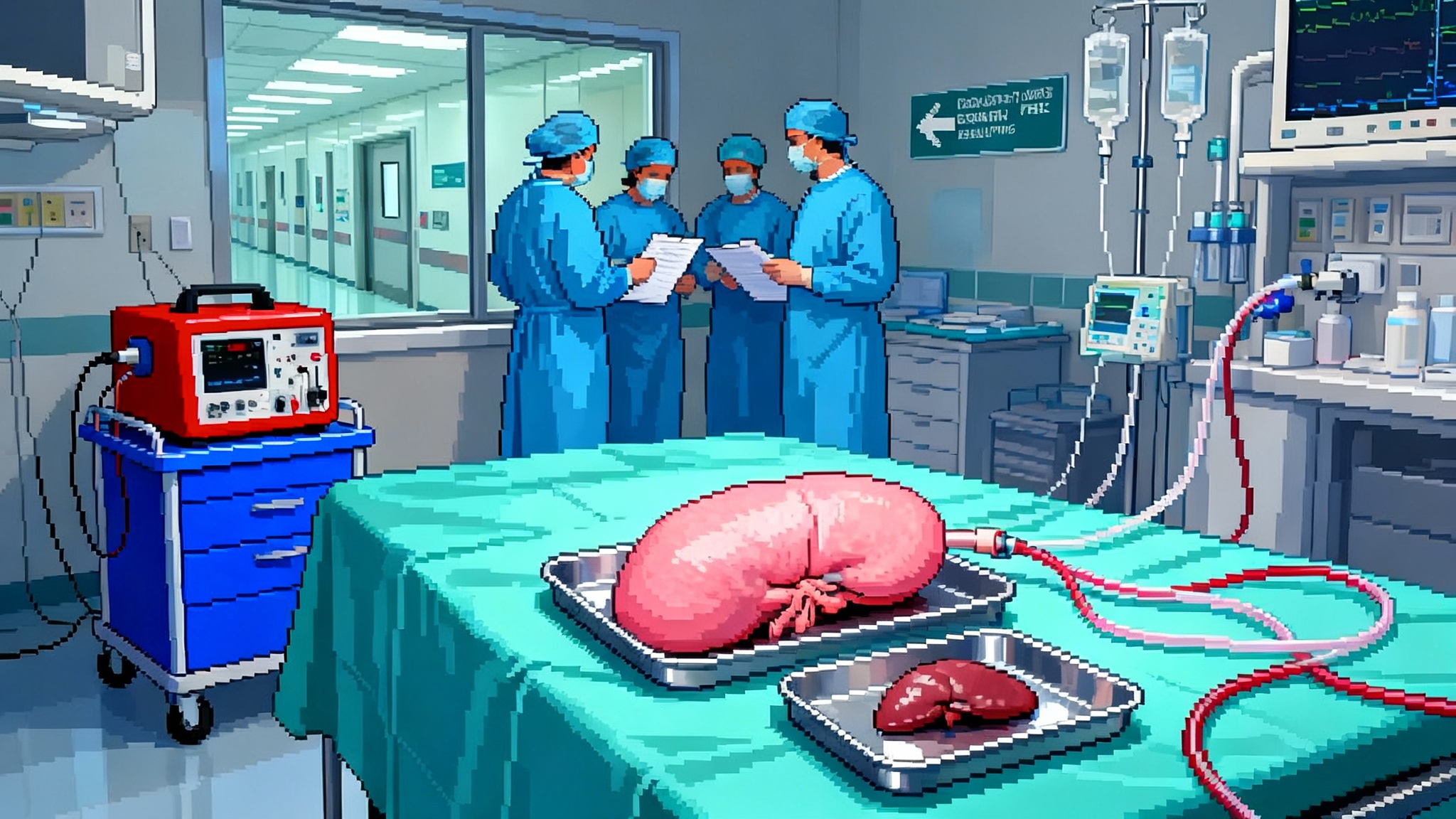Thymus Reset: Inside the 2025 Race to Reboot Immunity
A surge of 2025 data and company plans has turned thymus repair into a concrete path to reverse immune aging. Here is how drugs, artificial thymus organoids, and cell therapies could reach clinics within three to five years, plus the scorecard that will prove it.

Breaking: Thymic engineering steps into the spotlight
In 2025, immune rejuvenation stopped sounding like science fiction and started looking like a product roadmap. At meetings and in new papers, researchers and startups showed practical paths to restore the body’s T cell nursery, the thymus. Why that matters is simple. The thymus educates fresh naive T cells, the cells that recognize new pathogens and help vaccines work. It begins to shrink shortly after puberty, and by midlife its output falls so far that our immune systems become narrow, tired, and uneven. Rebuilding naive T cell output is not just a cool lab trick. It could reduce infections, improve cancer surveillance, and rescue vaccine response across midlife and aging. This momentum echoes other 2025 pivots, from arteries as aging's command hub to cellular energy turns into care.
There is already regulatory proof that thymic function can be replaced. In 2021 the United States Food and Drug Administration approved a surgically implanted thymus tissue product for children born without a thymus. That therapy, branded as Rethymic, is not aimed at aging, but it proves that engineered thymus tissue can build a working T cell education program in humans. It also reveals the first constraint, since tissue procurement and surgery limit scale. Still, it is the precedent the field needed to push into adult immune aging. Rethymic approval summary.
The simple picture: a school that graduated too soon
If immunity were a city, the thymus would be the school that teaches T cells what a “self” citizen looks like and how to spot strangers. With age, the school closes classrooms and hires fewer teachers. Graduates become more specialized and less adaptable. That is why an older adult might handle pathogens they have seen before, but falter against new viruses or poorly respond to novel vaccines. When we talk about a “thymus reset,” we mean reopening classrooms and graduating more broad minded naive T cells.
The 2025 playbook: three routes to a thymus reset
The year’s flurry of data points to a coherent playbook with three categories: drugs that reactivate or mimic thymic cues, engineered tissues and organoids that rebuild the education niche, and cell therapies that manufacture new T cells outside the body.
1) Drug pathways that turn the lights back on
Think of these as dial twiddles on the body’s own circuitry. Several are repurposable and could move quickly if early human readouts look strong.
-
Sex steroid blockade: Androgens help drive thymic involution in puberty. Temporary blockade with drugs such as leuprolide, goserelin, or degarelix has long shown the ability to boost thymopoiesis in animals and in specific human settings like bone marrow transplant. The practical trick for aging is to use short pulses that reopen the thymic niche without causing long term hormonal side effects. Expect pilot studies that pair a one to three month pharmacologic off switch with clear markers of new T cell output.
-
Interleukin 7: Interleukin 7 supports T cell survival and development. Clinical studies have increased naive T cell counts and sometimes signaled greater thymic output, although part of the effect is peripheral expansion rather than new graduates from the thymus. The 2025 strategy is to use intermittent, low dose schedules and to combine with selection cues so that expansion does not outpace education.
-
FOXN1 and thymic epithelial cell health: FOXN1 is a master regulator for thymic epithelial cells, the specialized teachers of T cells. Preclinical groups continue to show that restoring FOXN1 in aged thymi increases both the number and quality of these educators. New work in 2024 and 2025 highlights upstream signals like bone morphogenetic protein 4 and stromal cross talk that keep FOXN1 on. A practical near term path is protein or messenger ribonucleic acid delivery, tested for safety first in post chemotherapy immune rebuilding.
-
Repair signals that looked promising but need caution: Keratinocyte growth factor, also called palifermin, helps mucosal tissues. In some human contexts it has not improved thymic output and at times has done the opposite. Interleukin 2 can inflate naive counts by proliferating existing cells without adding diversity. The lesson for 2025 programs is to prioritize markers of newly minted T cells and repertoire breadth, not just higher counts.
-
Growth hormone based regimens: A small, widely discussed pilot trial in 2015 to 2017 combined growth hormone, dehydroepiandrosterone, and metformin in older adults and reported increased thymic fat free fraction and immune changes. The safety and durability questions remain, which is why current teams are exploring gentler pituitary secretagogues and better metabolic protection or moving beyond hormones toward targeted thymic cues like FOXN1.
What to watch: drug programs that pair a fast acting thymus opener with a sustained education signal, and that pre register the exact immune metrics they plan to hit in three months and in one year.
2) Artificial thymus and organoids that rebuild the niche
Organoids are miniature, lab built tissues that replicate key functions of real organs. For the thymus, organoids provide a controlled classroom for T cell education.
-
The surgical precedent: As noted above, Rethymic established that thymus tissue can rebuild T cell education in patients who completely lack it. That adds confidence that adult repair is not a fantasy. The remaining challenge is manufacturing, logistics, and moving from surgical implants to minimally invasive or injectable products.
-
iPSC derived thymic epithelial cells: Thymmune Therapeutics, based in Cambridge, Massachusetts, is developing induced pluripotent stem cell derived thymic epithelial cells manufactured at scale. The goal is an off the shelf source of the cortical and medullary teachers that together create positive and negative selection. The company’s public materials describe a machine learning enabled platform aimed at reproducible thymic cell batches and a first program for primary immunodeficiency, with aging indications to follow.
-
Artificial thymic organoids for ex vivo T cell production: University groups pioneered artificial thymic organoids that can turn stem cells into diverse T cells outside the body. Those cells can then be infused back into patients. Kite Pharma, part of Gilead, holds a license to a well known organoid method from University of California Los Angeles. The near term application is oncology, but the same bioreactors could supply naive T cells for immune rejuvenation if safety and tolerance are maintained.
-
2025 organoid momentum: In April 2025, FibroBiologics reported a poster at the ThymUS meeting describing a rapid and scalable thymus organoid development method intended to generate functional T cells and move toward a transplantable organoid. Details are early, but the direction is clear. The emphasis is on scalability and durability rather than bespoke surgical tissue. ThymUS 2025 poster announcement.
-
Miniaturized and high throughput models: A 2025 organoid study out of the United Kingdom introduced microwell array mini thymic organoids suitable for screening. These test kitchens let teams tune the mix of thymic epithelial subtypes, stromal cells, and Notch ligands like Delta like 4, then read out which recipes yield the right balance of CD4, CD8, and regulatory T cells with strong negative selection.
Engineering must haves: The niche needs both cortical and medullary epithelial cells, Aire driven display of tissue restricted antigens for central tolerance, proper Notch signaling for early T cell commitment, and a vascular interface to sustain the tissue. If any piece is missing, the output may be abundant but unsafe.
3) Cell therapies that deliver new graduates
A third route does not rebuild the school at all. It manufactures graduates elsewhere and buses them in.
-
Ex vivo naive T cell manufacture: Artificial thymic organoids can generate naive T cells from induced pluripotent stem cells. If the selection steps are faithful, these cells can widen an older person’s T cell receptor repertoire. Release testing would include T cell receptor diversity metrics and functional assays that show broad response to novel antigens.
-
Engineered thymic epithelial cell implants: Companies like Thymmune are pursuing implants or injections of thymic epithelial cells that lodge in host tissue and build a micro school. Compared with surgical grafts, this strategy aims for standardization and scale. It will require potency assays that predict in vivo education, not just cell surface markers.
-
Hybrid approaches: Some programs may pair a short pulse drug that opens the niche with a temporary organoid implant that drives selection and then regresses, leaving behind educated T cells.
The scoreboard that matters: proof points for a real reset
The field needs a short, non negotiable checklist. If you are an investor, clinician, or curious reader, these are the readouts to look for in the next studies.
-
T cell receptor excision circles, or TRECs: These are small DNA circles created when T cell receptors rearrange in the thymus. They do not replicate, so they dilute with cell division. Rising absolute TRECs in blood, or an increased signal joint to beta TREC ratio, indicate genuine new thymic output rather than simple expansion of existing cells.
-
Naive to memory ratio in both CD4 and CD8 compartments: Aging flips this ratio. A reset should move it back toward youth, with expansion of CD45RA positive naive cells that carry recent thymic emigrant features such as CD31 expression.
-
Repertoire diversity: The thymus is valuable because it makes a wide, evenly distributed T cell receptor library. Deep sequencing should show broader coverage and lower clonality. Diversity metrics such as Shannon entropy should rise. Importantly, the gain should not be dominated by a handful of expanding clones.
-
Vaccine response panels: The most practical functional test pairs immune readouts with vaccines. For example, a trial could administer a recombinant zoster vaccine or a newly updated influenza shot, then measure neutralizing antibody titers, memory B cell counts, and T cell interferon gamma enzyme linked immunospot responses. Older adults who receive a thymus intervention should show stronger and more durable responses than matched controls.
-
Safety gatekeepers: Central tolerance must hold. That means no spike in new autoantibodies, no rise in autoreactive T cell clones in repertoire sequencing, and no increase in autoimmune events on standardized clinical scales.
A three to five year path to the clinic
Here is a concrete route from this year’s energy to real products, with checkpoints you can track.
-
Year 0 to 1: Small interventional studies in high need settings. Candidates include adults recovering from T cell depleting chemotherapy, older stem cell transplant recipients, and adults over 60 with recurrent respiratory infections and low naive T cell counts. Interventions could be a short pulse of sex steroid blockade with or without interleukin 7, an implant of induced pluripotent stem cell derived thymic epithelial cells in a safety cohort, or infusion of organoid educated naive T cells. Primary endpoints at three months would be absolute TRECs, naive to memory ratio, and early vaccine response. Safety endpoints would prioritize autoimmunity signals.
-
Year 1 to 3: Move into randomized, controlled studies with clearly powered functional outcomes. Trials could stratify by baseline immune age, not just chronological age, and require pre specified thresholds for repertoire diversity gains. This is where standardized biomarkers from aging clocks return to the clinic can help with trial design. Manufacturing scale up would lock in potency assays for thymic epithelial batches, such as Aire activity and tissue restricted antigen display, and for T cell products, such as polyfunctionality and the fraction of public T cell receptor motifs.
-
Year 3 to 5: Expand to prevention focused indications. That means older adults with poor vaccine responses, people with high infection burden after retirement age, and cancer survivors with long term immune deficits. Payers will care about hospitalizations for respiratory infections, antibiotic use, and vaccine responder status, so composite endpoints should include those measures. Regulatory strategy can point to the Rethymic precedent as proof that thymic function is an approvable therapeutic target, while emphasizing new safety systems that enforce central tolerance in adults.
What could go wrong, and how to design around it
-
Autoimmunity: If negative selection is incomplete, newly educated T cells may attack self. Design organoids and implants that express Aire and tissue restricted antigens, and monitor autoantibodies and self reactive clones.
-
Overexpansion without diversity: Interleukin 7 or interleukin 2 can raise counts without adding breadth. Every study should commit to diversity metrics and to the signal joint to beta TREC ratio, not just total lymphocyte numbers.
-
On target, off tissue: Engineered thymic epithelial cells must stay where they are placed. Use localization tags and non proliferative states, and design suicide switches for rare cases of ectopic growth.
-
Manufacturing drift: Organoid products can vary week to week. Build potency assays that correlate with in vivo education and require regular recalibration to avoid slow drift.
How to act now if you build, buy, or treat
-
For researchers: Standardize the immune age panel across studies. Agree on a core kit that includes absolute TRECs, naive to memory ratios, repertoire entropy, and vaccine response readouts at 90 and 180 days. Publish the assays and the reference ranges so that trials can be compared.
-
For companies: Invest in two things that sound boring but will win. First, robust manufacturing for thymic epithelial cells and organoids, with lot release tied to functional selection in a short, automated assay. Second, a clinical operations plan that schedules vaccines as functional probes, with centralized laboratories and blinded analysis.
-
For clinicians: Identify patients who could benefit first, such as cancer survivors with low naive counts or older adults with repeated hospitalizations for infection. Assemble baseline panels and be ready to enroll in early pragmatic trials.
-
For individuals: The thymus reset era does not make basic prevention optional. Keep vaccinations up to date, train your immune system with sleep and exercise, and avoid unsupervised use of hormones or cytokines that can tilt the immune system in unpredictable ways.
The bottom line
In 2025, thymic engineering crossed from possibility to playbook. The mix of drug cues, transplantable organoids, and ex vivo T cell manufacture is coherent and testable. The field now knows the scorecard that matters, from TRECs to vaccine responses. If teams hit those markers in small, smart trials over the next one to two years, larger studies can follow and real products can land in three to five. The outcome worth working for is not a marginal tweak to immune numbers. It is a broad, safe expansion of naive T cells that compresses infection risk, tightens cancer surveillance, and restores vaccine responsiveness across midlife and aging. When the body’s T cell school reopens, the benefits show up far beyond the classroom.








